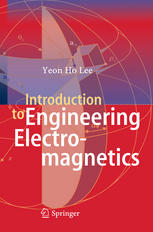

Most ebook files are in PDF format, so you can easily read them using various software such as Foxit Reader or directly on the Google Chrome browser.
Some ebook files are released by publishers in other formats such as .awz, .mobi, .epub, .fb2, etc. You may need to install specific software to read these formats on mobile/PC, such as Calibre.
Please read the tutorial at this link: https://ebookbell.com/faq
We offer FREE conversion to the popular formats you request; however, this may take some time. Therefore, right after payment, please email us, and we will try to provide the service as quickly as possible.
For some exceptional file formats or broken links (if any), please refrain from opening any disputes. Instead, email us first, and we will try to assist within a maximum of 6 hours.
EbookBell Team

4.0
16 reviewsThis text provides students with the missing link that can help them master the basic principles of electromagnetics. The concept of vector fields is introduced by starting with clear definitions of position, distance, and base vectors. The symmetries of typical configurations are discussed in detail, including cylindrical, spherical, translational, and two-fold rotational symmetries. To avoid serious confusion between symbols with two indices, the text adopts a new notation: a letter with subscript 1-2 for the work done in moving a unit charge from point 2 to point 1, in which the subscript 1-2 mimics the difference in potentials, while the hyphen implies a sense of backward direction, from 2 to 1. This text includes 300 figures in which real data are drawn to scale. Many figures provide a three-dimensional view. Each subsection includes a number of examples that are solved by examining rigorous approaches in steps. Each subsection ends with straightforward exercises and answers through which students can check if they correctly understood the concepts. A total 350 of examples and exercises are provided. At the end of each section, review questions are inserted to point out key concepts and relations discussed in the section. They are given with hints referring to the related equations and figures. The book contains a total of 280 end-of-chapter problems.